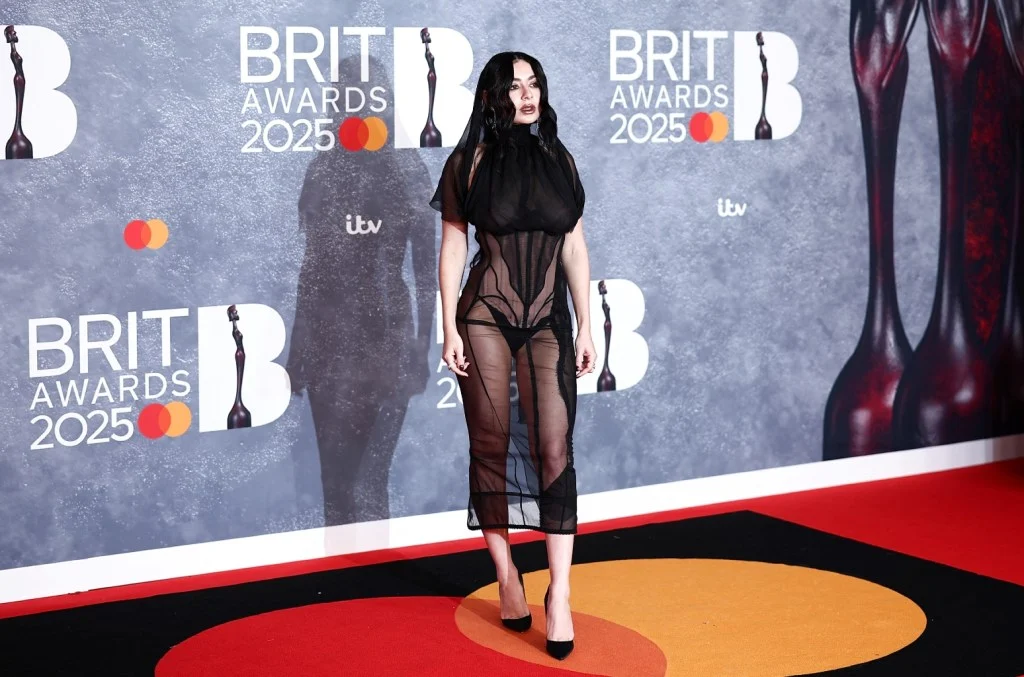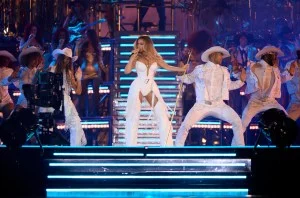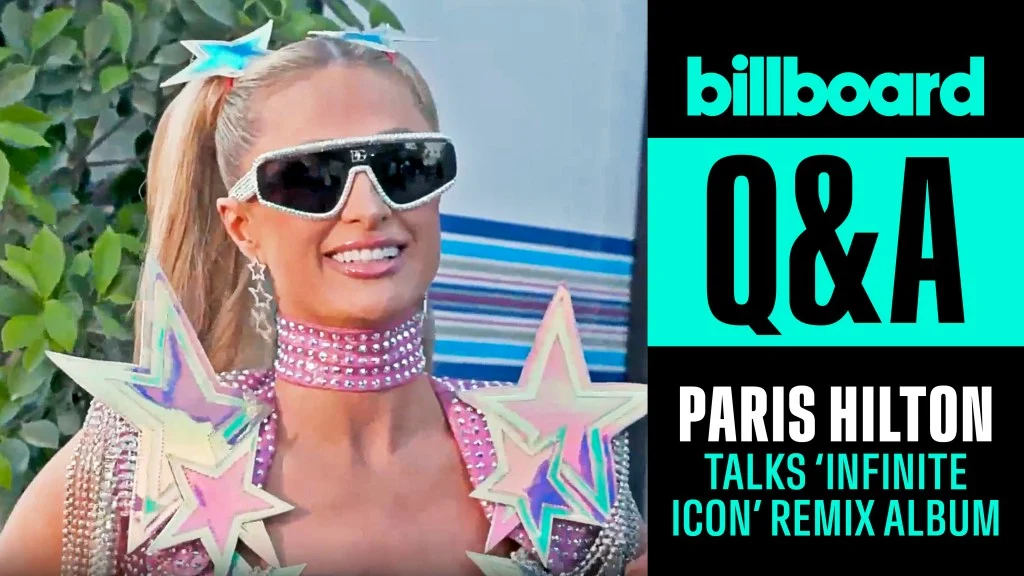genre pop
Page: 81
Lorde has released three albums, but it’s been so long since she dropped one that her fourth full-length effort, Virgin — which the star announced at long last Wednesday (April 30) — might just make you feel like she’s doing it for the very first time.
The New Zealand native shared the news via a posting on her website, revealing the LP’s blue-toned cover art and sharing that it will arrive June 27. “100% WRITTEN IN BLOOD,” she wrote, revealing that the project’s collaborators include Jim-E Stack, Fabiana Palladino, Andrew Aged, Buddy Ross, Dan Nigro and Dev Hynes of Blood Orange.
The album’s artwork marks Lorde’s first since 2013’s debut project, Pure Heroine, to not feature the “Royals” singer on the cover. Instead, the photo shows what appears to be an X-ray of a crotch area with a zipper showing up on the scan in the front; between the bones that make up the pelvis, an IUD is visible.
Trending on Billboard
In a release, Lorde further teased the direction of the record. “THE COLOUR OF THE ALBUM IS CLEAR,” she wrote in an all-caps statement. “LIKE BATHWATER, WINDOWS, ICE, SPIT. FULL TRANSPARENCY. THE LANGUAGE IS PLAIN AND UNSENTIMENTAL. THE SOUNDS ARE THE SAME WHEREVER POSSIBLE. I WAS TRYING TO SEE MYSELF, ALL THE WAY THROUGH. I WAS TRYING TO MAKE A DOCUMENT THAT REFLECTED MY FEMININITY: RAW, PRIMAL, INNOCENT, ELEGANT, OPENHEARTED, SPIRITUAL, MASC.”
“I’M PROUD AND SCARED OF THIS ALBUM,” she added. “THERE’S NOWHERE TO HIDE. I BELIEVE THAT PUTTING THE DEEPEST PARTS OF OURSELVES TO MUSIC IS WHAT SETS US FREE.”
The announcement comes just more than a week after Lorde dropped Virgin‘s lead single, “What Was That,” on April 24. The track arrived with an accompanying music video filmed in New York City, featuring footage of the singer meeting up with fans in Washington Square Park.
Lorde hasn’t released an album since 2021’s Solar Power, which reached No. 5 on the Billboard 200.
See Lorde’s announcement below.
Before she was one of the most recognizable voices in pop music, Chappell Roan was just one of countless aspiring singers whose hopes were dashed by the audition process for competition shows such as The Voice and America’s Got Talent.
In her W Magazine cover story published Wednesday (April 30), the pop star recalled her disappointing experiences trying out for both shows back when she was a teenager, with Roan not even making it past the first round for either. “When I auditioned for The Voice, I was 15 and I sang ‘Stay’ by Rihanna,” she began. “The producer or whoever the f–k was watching did not even look up from his phone. He was like, OK, next.’”
“I went up there and sang a cappella, the scariest thing ever,” she added. “He never really looked at me.”
Trending on Billboard
At that point, Roan had already auditioned for America’s Got Talent two years prior. “I was 13, and we flew to Austin, Texas, and waited in line with thousands of people at 4 a.m.,” Roan recalled of that experience. “I sang ‘True Colors’ by Cyndi Lauper. Did not make it either.”
The Missouri native wouldn’t get her big break until more than a decade later, and not before she’d endure even more setbacks (such as being dropped from her label, Atlantic Records, in 2020). In 2024, Roan’s career exploded with a hot streak of festival sets and the success of single “Good Luck, Babe!” on the Billboard Hot 100 — it peaked at No. 4 in September — with the star going on to win best new artist at the 2025 Grammys in February.
During her acceptance speech at the ceremony, Roan used her time on stage to challenge the music industry to take better care of developing artists, reading out of a well-loved notebook, “Labels, we got you — but do you got us?” To W, the “Casual” singer confirmed that the book was her actual diary, revealing that she’s been journaling since she was in middle school.
Roan also opened up about her first kiss in the interview — she was 15 and in her parents’ driveway, though she now says that “kissing girls is funner” — as well as her biggest pet peeve. “When people name-drop,” said the vocalist, who recently confirmed that she has a serious girlfriend. “I immediately don’t trust them.”
“I’m not the girl to care about that stuff,” she added. “It is an immediate turnoff in a romantic or a friendship way. I’m like, ‘If you name-drop, I’m probably not going to be your friend.’”
See Roan on the cover of W below.

Eighteen months ago, Barbra Streisand released My Name Is Barbra, an anecdote-rich memoir about her 60-plus years of blazing trails in music, film, Broadway, activism and beyond. But the story isn’t over. On Wednesday (April 30), the eight-time Grammy winner and five-time Billboard Hot 100 topper announced a new studio album, The Secret of Life: Partners, Volume Two, is coming out on her longtime label Columbia Records on June 27.
Explore
Explore
See latest videos, charts and news
See latest videos, charts and news
A sequel to 2014’s Billboard 200-topping album Partners, this new project also features a cross-genre, cross-generational list of duet partners. And some of the names on this tracklist are likely to leave more than a few jaws on the floor.
Trending on Billboard
There are duets with classic rock royalty, including Sir Paul McCartney, Bob Dylan, James Taylor and Sting (separately); Irish rocker Hozier; Icelandic jazz singer-songwriter Laufey; English crooner Sam Smith; country hitmaker Tim McGraw; Josh Groban, fresh off his celebrated Broadway stint in Sweeney Todd; and British soul mainstay Seal. Plus, there’s a duet with not just one but two vocally dynamic divas – Mariah Carey and Ariana Grande — that is sure to set the Internet aflame when it lands.
The first taste of the album, Streisand’s duet with Hozier, is already here. Listen to their take on Roberta Flack’s 1972 Hot 100 No. 1, “The First Time Ever I Saw Your Face,” out now.
“Barbra Streisand is one of the most enduring and iconic vocalists of our time, and somebody who defined an era with the sheer force of her voice, her talent, charisma and vision. To be asked to join her on a duet was a huge honor and came as a wonderful and welcome surprise,” Hozier said in a statement. “Ewan MacColl’s ‘The First Time Ever I Saw Your Face’, made famous by the stunning Roberta Flack recording, has always mystified me. It is, to me, one of the most beautiful love songs ever written. Like so many, I was deeply saddened to hear of her recent passing. Along with the honor I have to sing on this record with Barbra, I hope this duet offers something of a gesture to Roberta Flack’s incredible legacy.”
“I’ve always loved singing duets with gifted artists. They inspire me in unique and different ways…and make our time in the studio a joy,” Streisand said in a statement. “My new album, The Secret of Life: Partners, Volume Two, gave me the chance to work and play with some of my old friends, label mates, and new artists too. I admire all of them… and I hope that you’ll enjoy listening to our collaborations as much as I enjoyed recording with all of my wonderful partners.”
Check out the full tracklist for The Secret of Life: Partners, Volume Two below. The album is produced by Walter Afanasieff and Peter Asher, with orchestrations provided by William Ross and David Campbell. Streisand and Jay Landers, her longtime A&R executive, are the album’s executive producers.
Barbra Streisand
Kathryn Boyd Brolin
THE FIRST TIME EVER I SAW YOUR FACE with Hozier
MY VALENTINE with Paul McCartney
TO LOSE YOU AGAIN with Sam Smith
THE VERY THOUGHT OF YOU with Bob Dylan
LETTER TO MY 13 YEAR OLD SELF with Laufey
ONE HEART, ONE VOICE with Mariah Carey & Ariana Grande
I LOVE US with Tim McGraw
SECRET O’ LIFE with James Taylor
FRAGILE with Sting
WHERE DO I GO FROM YOU? with Josh Groban
LOVE WILL SURVIVE with Seal

Charli xcx has lined up yet another major acting gig. According to Variety, the singer will star in and produce the next movie from Japanese horror director Takashi Miike (Yakuza Apocalypse, Ichi the Killer). At press time no information was available about the film’s plot, but the unnamed film will be the second project Charli […]
Katy Perry has assured fans that she’s “ok,” despite a recent barrage of online vitriol that has come her way.
The singer addressed the recent negativity from online commentators in an Instagram comment on a fan page, expressing her gratitude toward her fans for their ongoing support during what she labels an undoubtedly difficult time.
“I’m so grateful for you guys. We’re in this beautiful and wild journey together,” Perry wrote. “I can continue to remain true to myself, heart open and honest especially because of our bond. I love you guys and have grown up together with you and am so excited to see you all over the world this year!”
Explore
Explore
See latest videos, charts and news
See latest videos, charts and news
Perry has found herself as something of a lightning rod for negativity in the past few weeks, with much of the discourse related to her spaceflight aboard the Blue Origin NS-31 on April 14.
While the likes of Kesha had been roped into the ongoing drama following an online post that seemingly referenced fast-food chain Wendy’s’ snarky jab at the “Firework” singer, English musician Lily Allen recently walked back her comments about calling Perry and her spaceflight “out of touch.”
Trending on Billboard
“There was actually no need for me to bring her name into it, and it was my own internalized misogyny,” Allen said on her Miss Me? podcast. “I’ve been thinking about it a lot, and it was just completely unnecessary to pile on with her. I disagree with what it was that they did, but she wasn’t the only person that did it. She was possibly the most famous and the one that divides people the most.”
The Instagram post which Perry responded to was a video of a Times Square billboard that congratulated the singer for the opening week of her Liftimes tour, and ostensibly aimed to serve as comfort amidst the online backlash.
As Perry continued, she explained that much of her ability to survive the barrage of negative comments has come about through plenty of therapy and personal growth.
“Please know I am ok, I have done a lot work around knowing who I am, what is real and what is important to me,” she noted. “My therapist said something years ago that has been a game changer, ‘no one can make you believe something about yourself that you don’t already believe about yourself’ and if I ever do have any feelings about it then it’s an opportunity to investigate the feeling underneath it.
“When the ‘online’ world tries to make me a human Piñata, I take it with grace and send them love, cause I know so many people are hurting in so many ways and the internet is very much so a dumping ground for unhinged and unhealed.”
Perry recently launched her Liftimes tour in Mexico on April 23, with each night also featuring fans being brought onstage during a special request section of the set. “What’s real is seeing your faces every night, singing in unison, reading your notes, feeling your warmth,” she concluded. “I find people to lock eyes and sing with and I know we are healing each other in a small way when I get to do that.
“I’m not perfect, and I actually have omitted that word from my vocabulary, I’m on a human journey playing the game of life with an audience of many and sometimes I fall but… I get back up and go on and continue to play the game and somehow through my battered and bruised adventure I keep looking to the light and in that light a new level UNLOCKS.”
Perry will bring her Lifetimes tour to the U.S. next week, with a headline date in Houston, TX set to take place on May 7.

Beyoncé kicked off her Cowboy Carter Tour in L.A. at SoFi Stadium on Monday night, and we’re taking you inside the highlights of the night. From Rumi making her debut onstage to Beyoncé performing her classic hit “Crazy In Love,” keep watching for more! Were you at the opening night of the Cowboy Carter Tour? […]
With the release of Cowboy Carter last year, a lot of noise was made about whether Beyoncé was “country enough” to put out a country album. More than one year (and her first album of the year Grammy) later, the answer is: of course she was. And she’s further proving her genre prowess on the […]
Paris Hilton graced Stagecoach 2025, and the pop queen shared how she prepped for her huge set, the details of her remix album, ‘Infinite Icon,’ and more!
Are you excited for Paris Hilton’s remix album? Let us know in the comments!
Tetris Kelly: We’re out here sliving with one of our favorite pop queens, Paris Hilton. How are you?
Paris Hilton: I am amazing right now. That was so much fun.
I mean, we gotta talk about how much fun it is. But let me tell you, you had one of the hottest sets at Stagecoach because Lance Bass from *NSYNC, the Backstreet Boys, Shaboozey, me, we were all outside. We couldn’t even get in Paris.
I heard there was 1000s of people trying to get in.
We were desperately trying to see your set, and you killed it. Brought Lizzo out. How was that?
I love her so much. She is so kind, lovely, talented, beautiful, amazing. Her new single is so sick. And it was just so much fun, feeling the energy and how excited everyone was. And I’m just so proud.
And I mean, you’ve been killing your festival season in general. You also popped up and surprised everybody at Coachella. So how do you prepare to, like, come to these festivals and put on a show like that?
I’ve actually been preparing this set for the past three months. So I’ve been researching, finding the best remixes of every song, remixing my songs, everything. So I want it to be very special and unique. And the outfit like this is from THEBLONDS, like it was a whole thing. And then my dancers, I’m just so grateful to my whole team for helping me put on an iconic show.
Keep watching for more!
Diane Warren, one of modern music’s most celebrated songwriters, was honored Monday (April 28) night at the New York Pops Gala at Manhattan’s Carnegie Hall for her extraordinary achievements in the music industry. The event brought together Warren, conductor Steven Reineke and a host of award-winning artists to pay tribute to her impact on decades of pop music.
Explore
See latest videos, charts and news
See latest videos, charts and news
Warren’s songwriting journey spans what feels like a lifetime of accomplishments with her first Billboard Hot 100 hit dating back to 1983 with “Solitaire,” performed by Laura Branigan. She has earned nine No. 1 hits among 33 top 10s on the Billboard Hot 100, and shares the record for the most No. 1s written by one writer – eight – in the chart’s history. Her vast catalog includes beloved classics such as “Only Love Can Hurt Like This” (Paloma Faith), “Un-Break My Heart” (Toni Braxton), “If I Could Turn Back Time” (Cher) and “Rhythm of the Night” (DeBarge).
The New York Pops recognized the Grammy winner with a series of moving performances by guest artists including Shoshana Bean, Sofia Carson, Taylor Dayne, Ariana DeBose, Micaela Diamond, Brandon Victor Dixon, Angélique Kidjo, Hailey Kilgore, Mykal Kilgore, Storm Large and LeAnn Rimes. Backed by the full orchestra, each artist performed a specially arranged version of one of Warren’s songs. Among the evening’s standout moments was Storm Large’s powerful rendition of “How Can We Be Lovers,” arranged and orchestrated by Dylan Condor. Sofia Carson—best known for her song in the Academy Award-nominated 2023 film Tell It Like A Woman—delivered a stirring performance of “Applause,” penned by Warren for the film. Carson expressed heartfelt gratitude to Warren, praising her dedication and her gift for channeling raw emotion through music.
Trending on Billboard
Alongside Diane, Reineke and the New York Pops, the PopsEd Program welcomed students from 15 states to the stage, including those in mentorship programs made possible by annual donors and the New York Pops Gala. PopsEd engages students of all ages and backgrounds, through mentorship, to spark creativity, build essential life skills, and make music accessible and fun. The PopsEd Program students sang alongside Mykal Kilgore, singing “Rhythm of the Night,” which DeBarge took to No. 3 on the Billboard Hot 100 hit in 1985.
With performances spanning hits from the 1980s to the 2000s, the night was a powerful tribute to Diane Warren’s enduring influence and her gift for crafting songs that transcend genres and connect with audiences across generations.

A new supreme is rising — and her name is Blue Ivy Carter!
Beyoncé kicked off her 32-date Cowboy Carter stadium tour at SoFi Stadium in Inglewood, Calif., on Monday night (April 28), and her eldest daughter stole the show several times.
After dazzling the crowd with an “America Has a Problem” dance break borrowed from 2023’s Renaissance World Tour — and a cameo alongside little sister Rumi during “Protector” — Blue returned later in the show for “Déjà Vu,” the 2006 Billboard Hot 100 top five hit that introduced the world to her mom’s Grammy-winning sophomore solo album, B’Day. Decked out in an on-theme brown leather chaps and tank combo with fringe details, the young singer-actress-dancer pulled out her best model walk as she strutted down center stage before leading her mom’s dancers in a thrilling rendition of the original mid-’00s “Déjà Vu” live performance choreography.
With her lengthy braids contouring the intense hairography and her lines and extensions crisper than ever, Blue flawlessly executed the dance break — and proved the enduring influence of Josephine Baker, whose iconic “Danse Sauvage” inspired the original “Déjà Vu” choreography. Elements of the moves Blue nailed have appeared in countless Beyoncé performances, from the song’s music video to the 2006 World Music Awards to her 2018 Coachella headlining set.
In the two years since she made her dancing debut on the Renaissance World Tour with “My Power” and “Black Parade,” the eldest Carter offspring has blossomed into a truly self-assured performer. In December, Blue joined her mom for the NFL’s Netflix-assisted Christmas Day halftime show, also known as “Beyoncé Bowl,” a 13-minute showcase of the Cowboy Carter LP. Blue has definitely spent the past few years living up to the Carter family name, and even her aunt Solange couldn’t resist showering her with love on social media. “TT’s babbyyyyyy killing s–t!” she posted on X Monday night (April 28), quoting a clip of Blue breaking down the “America Has a Problem” dance break.
Trending on Billboard
Outside of dancing, Blue Ivy has also made a killing at the box office. Last year, she starred as Kiara (Simba and Nala’s daughter) in Mufasa: The Lion King, Disney’s Barry Jenkins-helmed prequel to 2019’s photorealistic Lion King remake, in which her mother voiced Nala. The $722 million-grossing film arrived four years after Blue won a Voice Arts Award (best voiceover – children’s audiobook award) for her narration of Hair Love, the audiobook companion to Matthew A. Cherry’s 2019 Oscar-winning independent animated short film of the same name.
Launched in support of her historic Cowboy Carter album — which finally won Bey the long-elusive album of the year Grammy and made her the first Black woman to hit No. 1 on Top Country Albums — the Cowboy Carter Tour will visit nine American and European cities via a series of mini-residences hosted at some of the world’s grandest stadiums. The show is with flying cars and horseshoes, a special tribute to the Renaissance album and live renditions of every Cowboy Carter track (save “My Rose”).
Watch Billboard’s footage of Blue Ivy slaying the “Déjà Vu” dance break below, and check out a side-by-side clip of 2006 Beyoncé and her eldest daughter killing the choreography.

 State Champ Radio
State Champ Radio 






